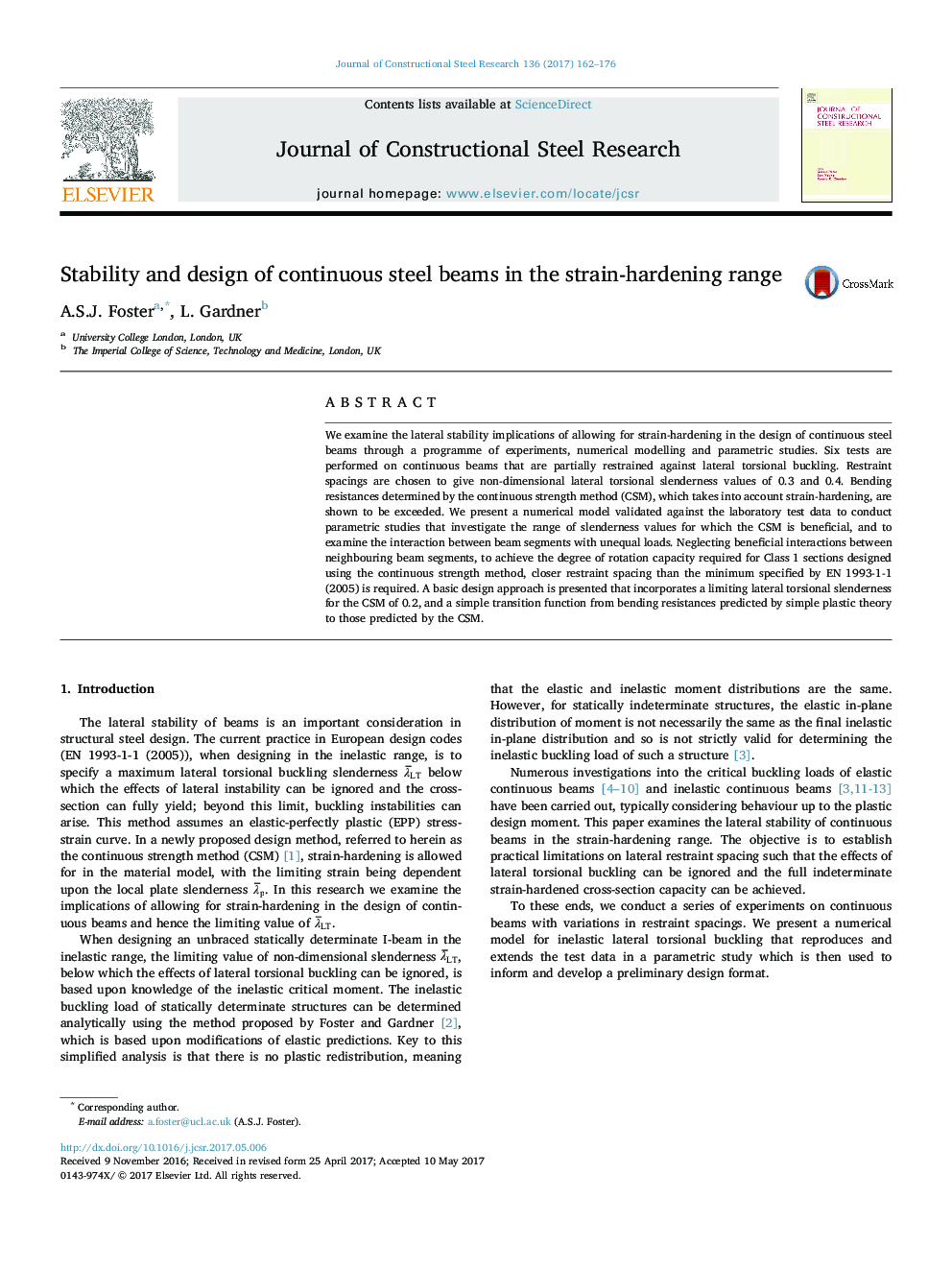| Article ID | Journal | Published Year | Pages | File Type |
|---|---|---|---|---|
| 4923287 | Journal of Constructional Steel Research | 2017 | 15 Pages |
Abstract
We examine the lateral stability implications of allowing for strain-hardening in the design of continuous steel beams through a programme of experiments, numerical modelling and parametric studies. Six tests are performed on continuous beams that are partially restrained against lateral torsional buckling. Restraint spacings are chosen to give non-dimensional lateral torsional slenderness values of 0.3 and 0.4. Bending resistances determined by the continuous strength method (CSM), which takes into account strain-hardening, are shown to be exceeded. We present a numerical model validated against the laboratory test data to conduct parametric studies that investigate the range of slenderness values for which the CSM is beneficial, and to examine the interaction between beam segments with unequal loads. Neglecting beneficial interactions between neighbouring beam segments, to achieve the degree of rotation capacity required for Class 1 sections designed using the continuous strength method, closer restraint spacing than the minimum specified by EN 1993-1-1 (2005) is required. A basic design approach is presented that incorporates a limiting lateral torsional slenderness for the CSM of 0.2, and a simple transition function from bending resistances predicted by simple plastic theory to those predicted by the CSM.
Related Topics
Physical Sciences and Engineering
Engineering
Civil and Structural Engineering
Authors
A.S.J. Foster, L. Gardner,
